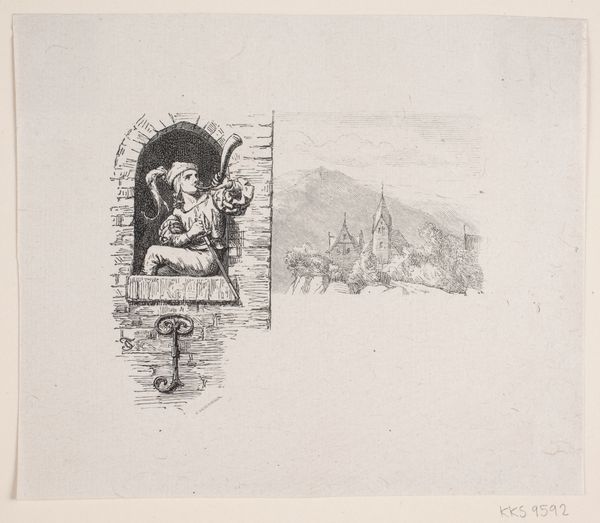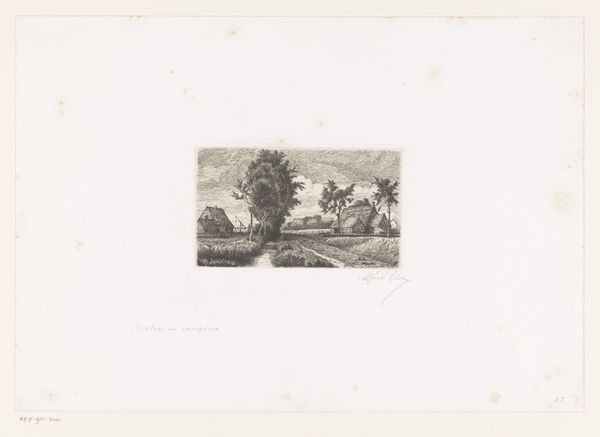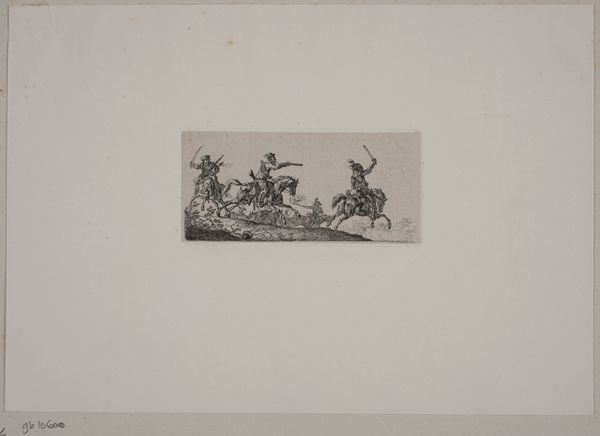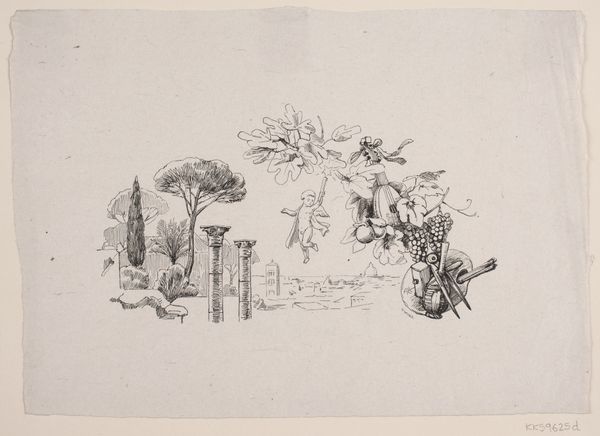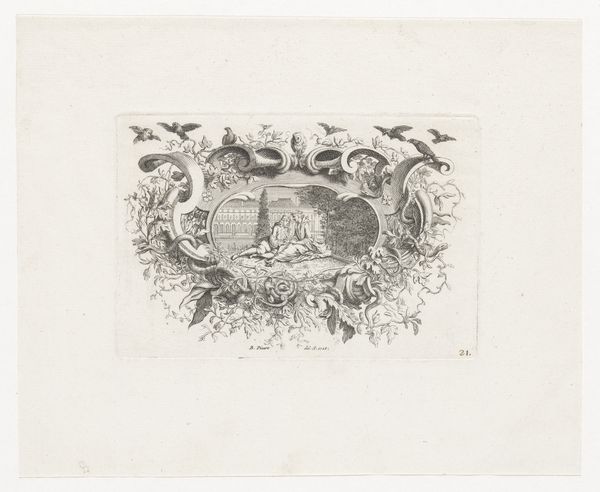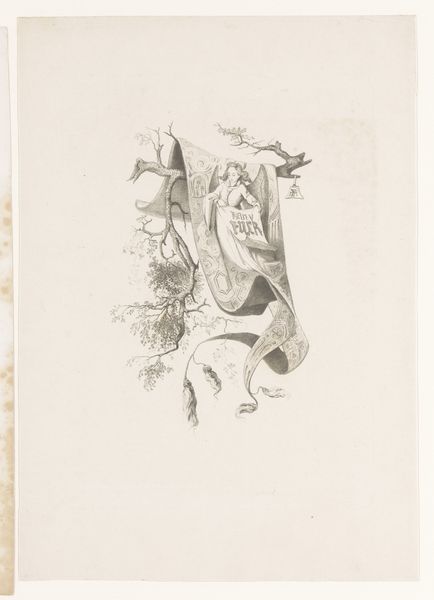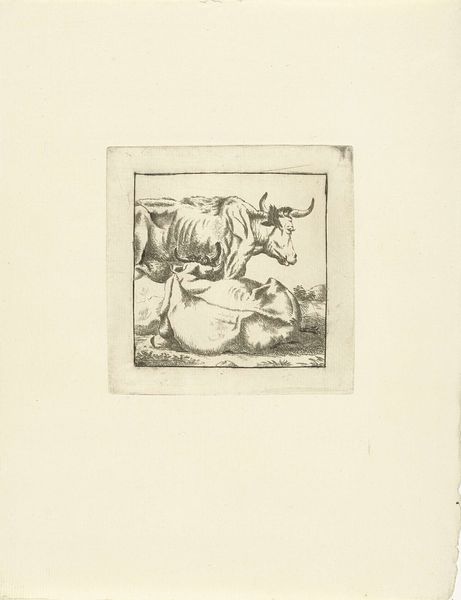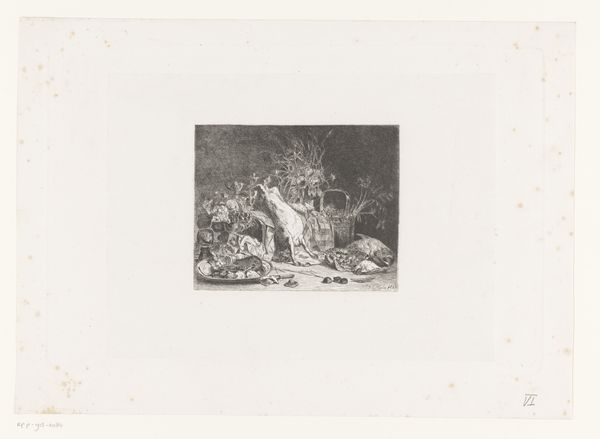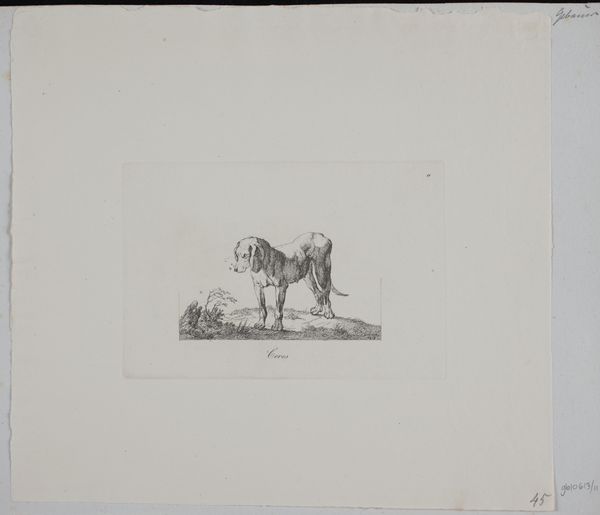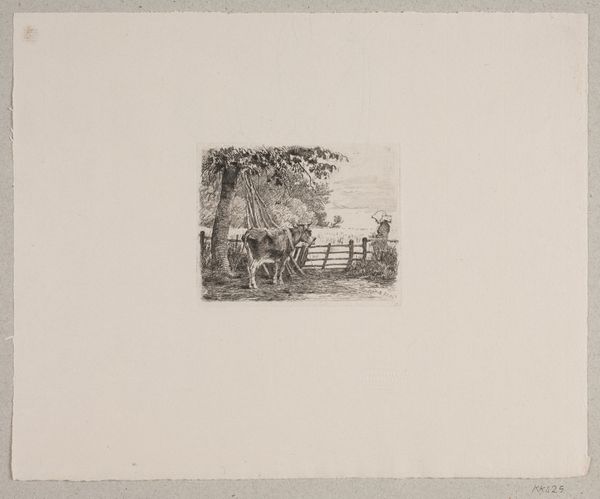
drawing, print, engraving
#
drawing
# print
#
figuration
#
line
#
academic-art
#
engraving
Dimensions: Sheet: 4 5/8 × 4 13/16 in. (11.7 × 12.3 cm) Image: 1 3/4 × 2 5/16 in. (4.5 × 5.8 cm)
Copyright: Public Domain
Curator: This engraving, a print dating from around 1919, is titled "Vignette of trophies." It's currently housed here at the Metropolitan Museum of Art. Editor: It gives me a strange sense of melancholic grandeur. All those objects crowded together, rendered in such fine detail… the stark contrast between light and shadow feels particularly potent. Curator: I find myself considering the role of trophies and symbolic objects in the aftermath of World War I, the approximate time this engraving was created. There is an undeniable connection between how nations and individuals coped with the losses experienced during the conflict, and their visual culture. These are objects of apparent power, meant to signify the apex of achievement, yet here, presented as relics of the past. Editor: That's an interesting point. Looking at the objects themselves, the urns and scroll, the suggestion of classical antiquity, certainly speak to the concept of a former, ideal age… yet also of absence and fragmentation. Consider how the figure of what looks like an angel, along with that guitar or lute, leans away from the other elements. A visual tension or reluctance? Curator: Exactly. It reflects, perhaps, the anxieties of the time. This piece complicates the idea of straightforward celebration, revealing a world grappling with disillusionment. Consider the materials—drawing and printmaking. Print was a particularly important and powerful medium to transmit propagandistic views across societies during that time, and in this piece we seem to see the artist reflecting and drawing a commentary on war's trophies, achievements and spoils. Editor: Focusing on the purely formal qualities, the dense concentration of lines really arrests the eye. You know, for me, it brings to mind a memento mori composition—objects grouped together as a vanitas. This highlights life's impermanence, a visual cue prompting reflection on time's inevitable passage. Curator: Memento mori… an insightful comparison given the period. Perhaps this piece could act as a cautionary message. And to think that objects presented to signify achievement, honor, and triumph, can signify an end to those experiences in life. Editor: A stark and evocative reminder through seemingly simple, academic means. Curator: Indeed, there is more at stake than meets the eye!
Comments
No comments
Be the first to comment and join the conversation on the ultimate creative platform.
